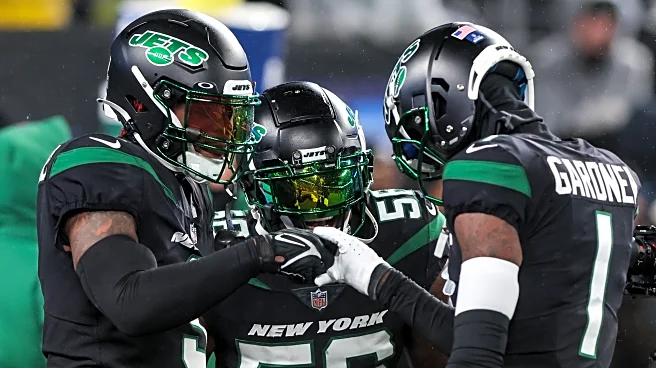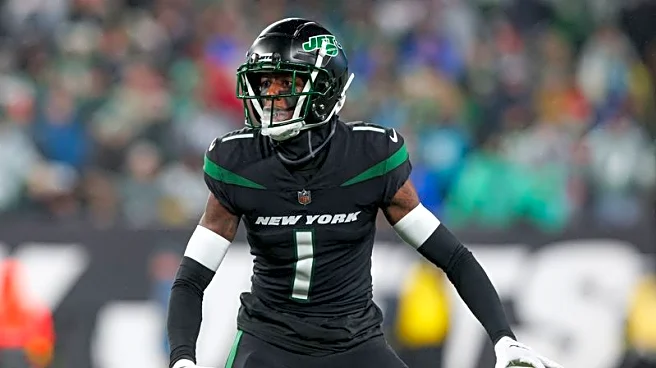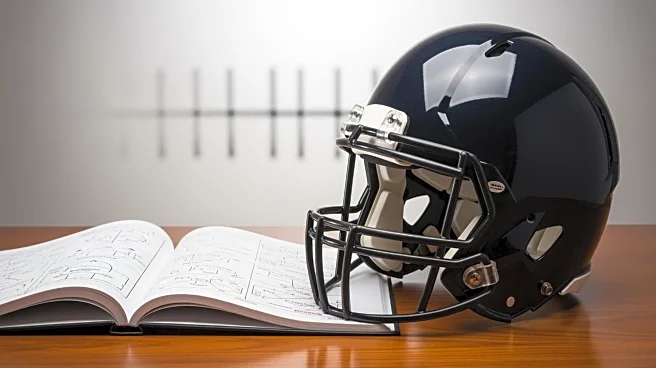What's Happening?
The NFL trade deadline has seen significant activity, with teams categorized as buyers, sellers, or standing pat. Notable trades include the New York Jets sending All-Pro cornerback Sauce Gardner to the Indianapolis Colts for two first-round picks and wide
receiver AD Mitchell. The Dallas Cowboys acquired defensive tackle Quinnen Williams from the Jets, bolstering their defense. Teams like the Colts and Cowboys are actively seeking to improve their rosters, while others like the Giants and Commanders are looking to accumulate draft capital. The deadline reflects strategic decisions based on team needs, salary cap projections, and draft capital.
Why It's Important?
These trades have the potential to reshape team dynamics and impact playoff prospects. For the Colts, acquiring Gardner strengthens their defense, potentially improving their chances in the competitive AFC. The Cowboys' acquisition of Williams addresses defensive weaknesses, crucial for their playoff aspirations. Teams selling assets, like the Jets, are focusing on rebuilding and future draft opportunities. The strategic moves highlight the importance of balancing immediate needs with long-term planning in the NFL.
What's Next?
As teams integrate new players, the impact on performance and team chemistry will be closely watched. The Colts and Cowboys will aim to leverage their acquisitions for playoff success, while teams like the Jets focus on rebuilding. The trades may influence future draft strategies and offseason decisions, as teams assess the effectiveness of their deadline moves.
Beyond the Headlines
The trade deadline underscores the complexities of managing salary caps, player contracts, and draft capital. Teams must navigate these factors to optimize their rosters, highlighting the intricate balance between short-term gains and long-term sustainability in the NFL.















